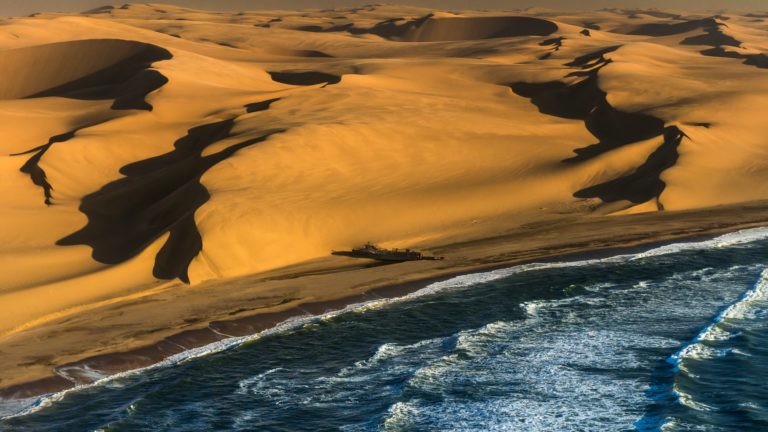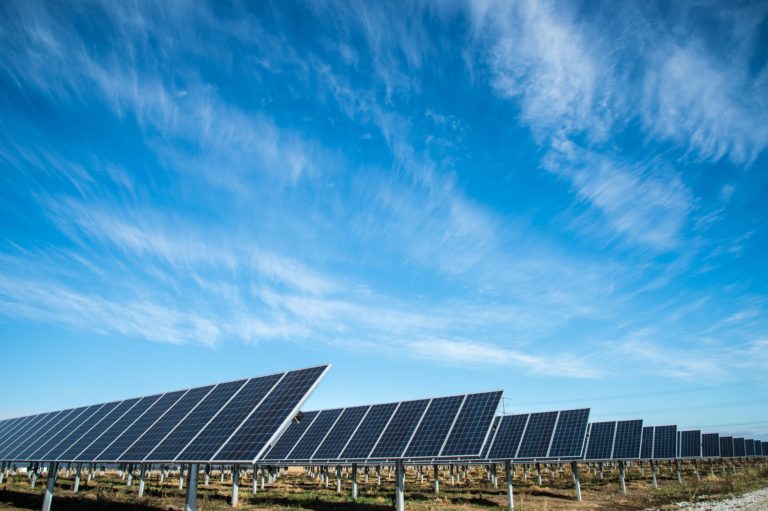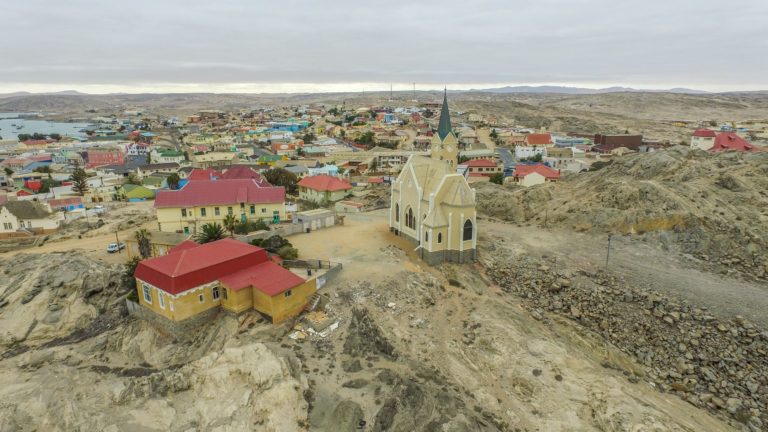Namibia could be a powerhouse of renewable energy from solar alone, but the country is now positioning itself as a leader for another energy source: renewable hydrogen power.

The town of Lüderitz is situated in Southeastern Namibia, near the skeleton coast where it hopes to utilise its wind and solar energy potential to produce green hydrogen. Picture: Unsplash
With more than 300 days of sun a year, the large, but sparsely populated country is enough to make any solar energy provider twitch, with the nation piquing the interest of investors.
According to Wall Street Journal, Namibia has now already sourced €40 million in funding from Germany to use on feasibility studies and pilot projects related to ‘green hydrogen’.
What is green hydrogen?
Green hydrogen is being touted as a key resource in achieving decarbonisation in the energy system. It is the simplest and most abundant element on earth, with the ability to store and deliver energy.

The Namibian government plants to exploit its abundant solar and wind assets to produce green energy. Picture: Unsplash
It is already used in industry, where it’s usually made through the gasification of coal and used industrially to add to natural gas and burn-in thermal power, to treat metals and produce fertilisers.
The energy potential of hydrogen aside, the fact that is usually sourced as a by-product from fossil fuel production makes it problematic as a ‘green’ fuel. This is where green hydrogen comes to the fore, which could eliminate carbon emissions using renewable energy, something especially abundant in Namibia.
Green hydrogen could then be produced by utilising Namibia’s abundant renewable sources, almost eliminating carbon emissions. The plan is to set up desalination plants, which will be powered by extensive solar and wind power plants, which will provide water for the process of electrolysis as well power the desalination and hydrogen plants.
Why all the sudden interest?
With the path towards decarbonisation, a priority in staying true to climate commitments, electrifying the entire energy system will prove far too expensive, not to mention the exploitation involved in mining rare earth metals needed in renewable energy.
Green hydrogen could then make use of renewable energy when it is abundant and in low demand through a system of electrolysers that use electricity to split water into hydrogen and oxygen, which will produce green hydrogen and ammonia for export.
Ireland is already trialling the use of hydrogen buses in their public transport infrastructure, with Honda and Toyota have already produced hydrogen fuel-powered vehicles, so the technology is available to make the most out of green hydrogen.
Green hydrogen will also be important as backup power for enabling renewable energy, which tends to be incremental in its production and needs a large and expensive storage capacity.
Add to this, the potential it has for replacing fuel combustion infrastructure, where Ireland is already trialling the use of hydrogen buses in their public transport infrastructure. Honda and Toyota have already produced hydrogen fuel-powered vehicles, so the technology is available to make the most out of green hydrogen.
Ground zero: Lüderitz
The coastal town of Lüderitz in southwestern Namibia has been earmarked as a major development zone. The international community has embraced this development plan, where the Namibian government has already been invited to present their post-Covid economic recovery plan at the World Economic Forum in Davos next year.

The small coastal town of Lüderitz is earmarked for a major industrial development in producing green hydrogen. Picture: Wikimedia Commons/SkyPixels
With the town experiencing a diamond rush in 1900, Lüderitz is about to wake up to a green energy rush, where Namibia is poised to take advantage of its natural assets, and position itself as a green hydrogen hub.
The town will need a new deepwater port to export its hydrogen via ship, which the government is already planning to fund via a private-public partnership.
Due to Nambia being an arid nation, and the process of electrolysis requiring large amounts of water, the government envisions seawater desalination plants, which will include solar plants to ensure production is carbon neutral. The project sites for these hydrogen plants will consist of industrial blocks outside of Lüderitz, each approximately 100- square km in size.
The town with a population of 30 000 is already making plans to expand its services like water, sewage and housing, where it expects a population growth of 3 000 per block. Namibia’s natural assets could make the country the worlds cheapest green hydrogen producer, and be instrumental in cutting carbon emissions to the net-zero benchmark by 2050.
ALSO READ
Mozambique records largest sighting of dugongs since the 1990s


















